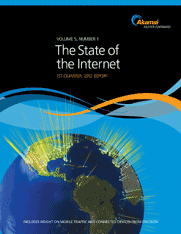
Photo Credit: Danny Morgan
National Broadband Strategies (NBSs) are becoming a necessity for each nation nowadays considering the immerse benefit of such policies or strategies or plans to unlock the full potential of the broadband network and maintain an open Internet. As a result, a NBS should be seen as a social contract to develop the industry base within any country. It should aim at bringing about a stronger foundation for effective governance, private investment and more active citizenship, leading to a desirable social and economic future.
Below are the 9 points distilled from the World Bank’s Broadband Strategies Handbook and another Conference Paper by Prabir K. Neogi and Rekha Jain that reviews some national broadband strategies.
1) A National Broadband Strategy (NBS) should take an Ecosystem Approach by considering both the demand and supply of broadband: This must include a) Networks – by creating the environment to reduce barriers for international connectivity, domestic backbones, metropolitan connectivity, and local connectivity; b) Services – by providing broadband services to schools, government agencies, etc.; c) Applications – by making available e-applications and content (local) creation; d) Users – by considering Customer Premise Equipments (CPEs) and Personal Computers (PCs), and digital literacy.
2) In order for the ordinary citizen to benefit from broadband investments, a NBS of any country should aim at having the greatest economic impact on the country: This could be achieved by creating and making available broadband-enabled services and applications; and then building the capacity of users to use the broadband-enabled services and applications in a productive and efficient way.
3) NBS should describe the broadband supply chain from a topological perspective: Such a topology should take into consideration a) The international, regional, national, and local connectivity and access deployment solutions; b) The technologies for each of these segments – fiber optics, satellite, microwave, mobile wireless, and traditional copper wire; and c) The implementation issues associated with these technologies – open access, quality of service, and spectrum constraints.
4) NBS should describe demand in order to make broadband services available to the users: By clearly defining the private and public sector roles to facilitate adoption after the networks are created; go beyond the market demand to reach where demand is stifled because consumers are not aware of the benefits of broadband; where broadband is not affordable; and where broadband is not attractive or relevant to potential users.
5) NBS should aim at building the capacity of users: The presence of broadband services without the capacity of the citizens to use them may be a waste of investment. Hence capacity for citizens, businesses, and government should be build to understand, learn, and apply broadband benefits and capabilities across the economy and society: Absorptive capacity in the areas of the economy’s macroeconomic environment; the business environment; the quality of human capital; and the governance structure are key for consideration.
6) Stages of NBS: NBS should be design to include three stages: a) Promotion stage when the market is incipient and the aim will be to promote the build-out of broadband networks, encourage the use of broadband services and applications, explore options for funding the development of the strategy and address issues associated with measuring the effectiveness of policies designed b) Oversight stage will key as competition begins to drive growth. The traditional legal and regulatory frameworks need reforms in order to address supply and demand issues with convergence of the technologies. Government’s role in creating the environment for oversight through competition policy, guard against monopolistic, oligopolistic, and unfair practices and regulate essential facilities. c) Universalization stage comes as the market matures. The role of governments is needed when market mechanisms do not meet goals for broadband access and use. This can be done through universal service and access programs. Government should also narrow or eliminate gaps between markets and the country’s development needs to allow for private-led competitive markets.
7) Scale and scope of the strategy: NBS should be seen as a component of a larger, long-term phased national economic plan for the adoption and use of ICTs to improve competitiveness and productivity. Countries such as Australia has taken a comprehensive national strategy approach that is rather supported by all levels of government. Others also have a standalone or ad hoc programs at various levels of government, to improve broadband connectivity in rural and remote areas.
8) Duration of the broadband strategy: A NBS should be developed in such as way that it is not too long that technology solutions might have radically changed, but covers a longer time frame than electoral cycles in most countries. Example of short/medium term initiatives, such as 2-3 year programs of the U.S. DOC/NTIA $4.2 billion Broadband Technology Opportunities Program/BTOP), funded under the American Recovery and Reinvestment Act of 2009. On the other hand, the Australian National Broadband Network (NBN) initiative and the Federal Communications Commission’s proposed National Broadband Plan are long term strategies extending over 5-10 years.
9) Funding and implementation model: NBS should consider the degree and nature of public sector funding and support such as direct funding, loan guarantees, targeted tax incentives. In most cases, governments are provide one-time, up front capital grants to fund the deployment of the broadband infrastructure. But the main challenge is with the provision of continuing subsidies for the ongoing operation of the network facilities which mostly may be the function of the private sector. The model of greatest interest is the Public-Private Partnership (PPP), with joint ownership of the deployed infrastructure as seen in Singapore, Australian NBN, and New Zealand.
In conclusion, there is no ‘one size fit all’ for National Broadband Strategies but a good NBS should have the following key characteristics:
a) Be forward looking to keep up with the pace at which technology is being developed
b) Become a permanent fixture of economic development and the embodiment of a shared vision
c) Be resilient to the checks and balances brought about by politics
d) Be endorsed by all policy-makers at the time of conception
e) Demarcate respective roles of public and private sector participation, and the potential for partnerships
f) Should contribute to demand through e-services, expertise centers, government services online, and capacity building.
Note: Key points in this post were distilled from the: The World Bank’s Broadband Strategies Handbook, edited by Tim Kelly and Carlos Maria Rossotto (2012) in preparation for the release of Broadband Strategy Toolkit as done for Telecom Regulation and National Broadband Strategies: and A Comparative Review and Possible Lessons for Developing Countries by Prabir K. Neogi and Rekha Jain (2011/12), presented in a conference in India, February 2012.








































